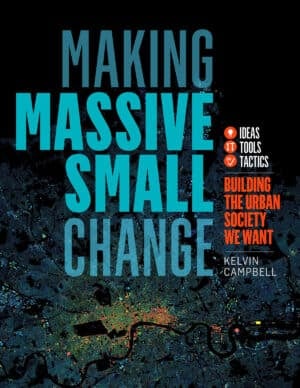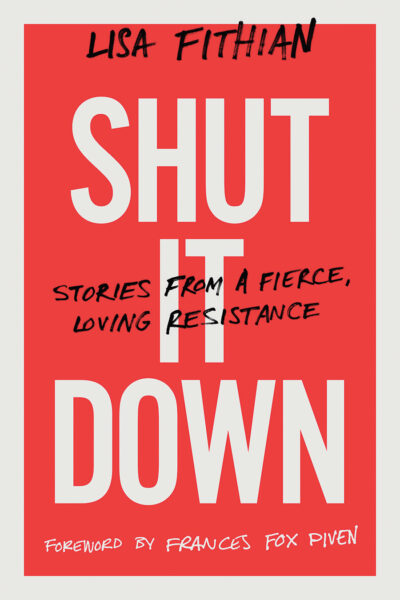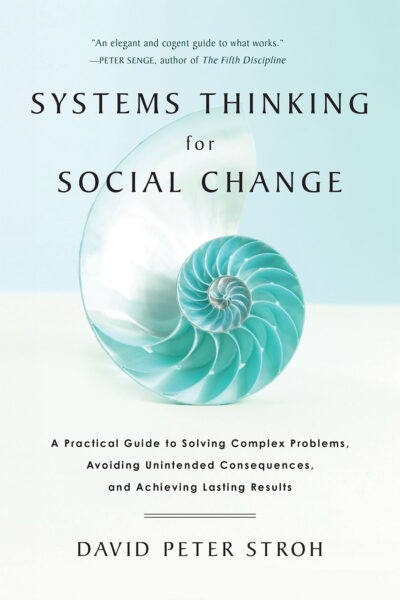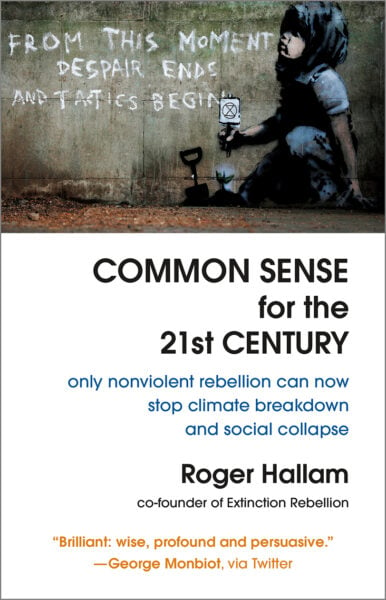Making Massive Small Change
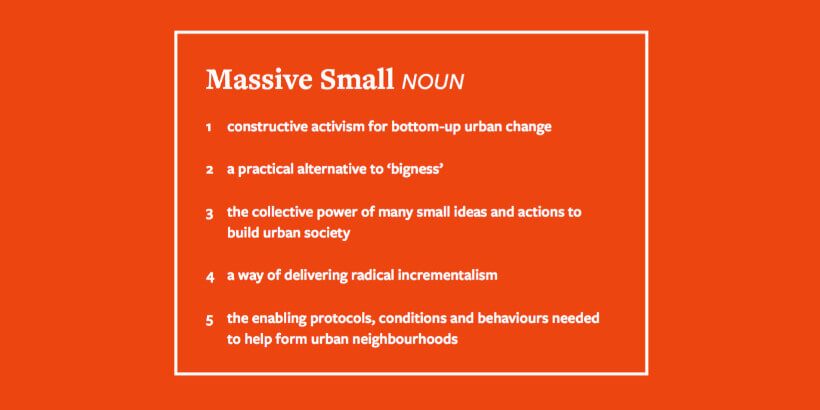
For generations, we’ve worked collectively as a society to build our cities into vibrant communities where we can progress and flourish together. Over the years, however, we’ve lost the art of collective and community evolution as our governments step in with their big ideas for urban growth – many of which come at a steep price.
It’s become apparent that in this complex and ever-changing world, the systems we have in place to build and strengthen our urban neighborhoods, and the officials we’ve elected to oversee those systems, are doomed to fail.
The following is an excerpt from Making Massive Small Change by Kelvin Campbell. It has been adapted for the web.
What is Massive Small Change?
The Massive Small project has its roots in Smart Urbanism, an urban research and development initiative led by the author.
The project’s aim is to reconcile the conflicts and potentials that exist between top-down and bottom-up systems of urban planning, design and development in our increasingly upside-down, local, informal and complex world.
The name was first coined in his book Massive Small: The Operating System 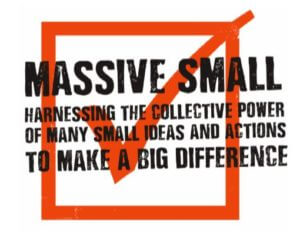 for Smart Urbanism.
for Smart Urbanism.
Published as an open source, beta version of this book to stimulate debate around the subject and develop an online community on LinkedIn, it posed the view that the solution to building a better urban society lies in mobilising people’s latent creativity.
As an antidote to bigness, it looks to harness the collective power of many small, bottom-up ideas and actions to shape urban neighbourhoods.
The Massive Small project has evolved into a viable proposition. With the support of the Royal Commission for the Exhibition of 1851 and University College London, it has developed a range of ideas, tools and tactics that show practical ways of reforming our current top-down systems.
This project demonstrates how people and governments can work together to shape new and existing environments to meet the needs of future generations.
This work has been underpinned by a collective body of knowledge that comes from a wide range of sources: from the old urban theorists and contemporary thought leaders; from constructive activists to rational optimists; from self-help projects, nongovernmental organisations, creative commons, social innovation hubs, peer-to-peer workers, selforganised groups, bottom-up initiatives, and civic and sharing economy programmes.
The list grows.
The project is aimed at active citizens, civic leaders and urban professionals: anyone who wants to make a difference but may not know where to start.
Our companion book, The Radical Incrementalist: How to Build Urban Society in 12 Lessons, written by this book’s author Kelvin Campbell and edited by his long-time collaborator Rob Cowan, tells inspirational stories through the eyes of imaginary citizens from different parts of the world, showing governments and people successfully working together to make amazing things happen that neither could have achieved alone.
The Radical Incrementalist and this book were made possible by a successful Kickstarter crowdfunding campaign, supported by the Royal Society of Arts, Impact Hub, Alan Baxter, the Geovation Hub and our part-time volunteers.
Although making Massive Small change is the sharp point of this project, it is framed within the larger challenges that our towns and cities face.
It stems from the context of increasingly falling government effectiveness in addressing these challenges—all made worse by the intentions of many governments worldwide to ‘do more with less’ and expressly withdraw from solving the full spectrum of urban problems. It is also set within the growing realisation that our current systems of planning, design and development have to change.
So the project forms part of a larger systems change perspective—how we need to move from restrictive top-down policies to generative urban protocols that release the potential of bottom-up action; how we need to move from deterministic practices that envision perfect end states to establishing the initial conditions for new urban vernaculars to emerge; and how we need new behaviours that move from our old, rigid, command-and-control processes to enabling and managing responsively in the present.
Why Does Massive Small Change Work?
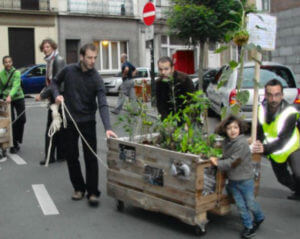 Thousands of small-change projects are being carried out by people—active citizens are taking the initiative, helping each other, helping themselves or using technology to engage with one another. We look around and see their energy.
Thousands of small-change projects are being carried out by people—active citizens are taking the initiative, helping each other, helping themselves or using technology to engage with one another. We look around and see their energy.
Someone is struggling to build a shack in an informal settlement. Someone else is trying to make a new use in an underused building. A community group is reclaiming a local street. A local civic leader is stepping outside the mainstream. An urban professional is exploring new ways of changing the world.
Things happen despite government not because of it. Instead of waiting for the authorities or established organisations to act, people are getting going themselves. This process is innate. It cannot be taught. It cannot be coerced. So how can we harness this latent energy to build urban society?
Too often, people’s energy is obstructed by our top-down systems. Most people can be trusted to do the right thing, but they are too rarely given a chance. The system works against them, stifling their initiative and knocking them back. Some battle through, but most fall by the wayside. Many small projects fizzle and die, or they rely on the efforts of a few people to keep them alive, and because these projects fail to grow and mature, their lessons never benefit other places.
Most people are in some way creative. They want to make a big difference to their communities. With the right tools, they can solve urban problems. Amazing things happen whenever people take control over the places they live, adapting them to their needs and creating environments that are capable of adapting to future change.
When many people do this, it adds up to a fundamental shift. It is what we now call making Massive Small change, or radical incrementalism at work.
Radical Incrementalism
For some, radical change is the only way to deliver real change. ‘Do it big once and get it over with’, they say. Some would say this is too risky. Others gain an advantage by building on incremental improvements. ‘Small progressive changes will get us where we need to go’. Some would say progressive change is not quick enough and doesn’t have the same impact.
In juxtaposing radical with incremental change, a common assumption is that the two are mutually exclusive. Seeing the two concepts, incremental and radical, as being different can be psychologically satisfying—it’s either this or it’s that—but by consciously pursuing incremental changes with a radical goal, one can ultimately bring about something far more transformational. It’s called ‘radical incrementalism’.
We have used the term radical incrementalism to describe a deliberate strategy in urban planning, design and development, in which a series of small changes are enacted one after the other, resulting in radical cumulative changes in the formation of neighbourhoods. While you should have a shared vision of where you want to go, the incremental steps to get there necessarily shape the course.
The feedback you get along the way will initiate, accelerate and modify your next actions. It is iterative and adaptive learning at its best—governments and people gain knowledge along the way, better informing their future decisions.
Recommended Reads
Recent Articles
Want to witness the magic of the mini-forest? When you practice The Miyawaki Method, a unique approach to reforestation, you’ll see an empty lot or backyard transform into a biodiverse forest before your very eyes. The following is an excerpt from Mini-Forest Revolution by Hannah Lewis. It has been adapted for the web. Photo Credit:…
Read MoreWhen you plan out how you want your garden to look and operate, you’re setting yourself up for long-term success. Here are some helpful tips on how to plan the best garden this upcoming growing season! The following excerpt is from The Resilient Gardener: Food Production and Self-Reliance in Uncertain Times by Carol Deppe. It has been…
Read MoreAddressing the pressing issues affecting everyday Americans is essential—and one of our nation’s most profound challenges is the devastating impact of mass layoffs. Layoffs upend people’s lives, cause enormous stress, and lead to debilitating personal debt. The societal harm caused by mass layoffs has been known for decades. Yet, we do little to stop them.…
Read MoreThis fig pecan bread is a sweet, delicious, and nutritious side that everyone around the table will enjoy this winter (or maybe you’ll want to keep it all to yourself, we won’t judge). Enjoy! The following is an excerpt from From the Wood-Fired Oven by Richard Miscovich. It has been adapted for the web. What…
Read MoreWhat if we told you that there was a way to extend your growing season and save time & money? The answer is all in arugula. With quick hoops and greenhouse film, you’ll be on your way to harvesting sweet & flavorful arugula in no time. The following excerpt is from The Resilient Farm and…
Read More

